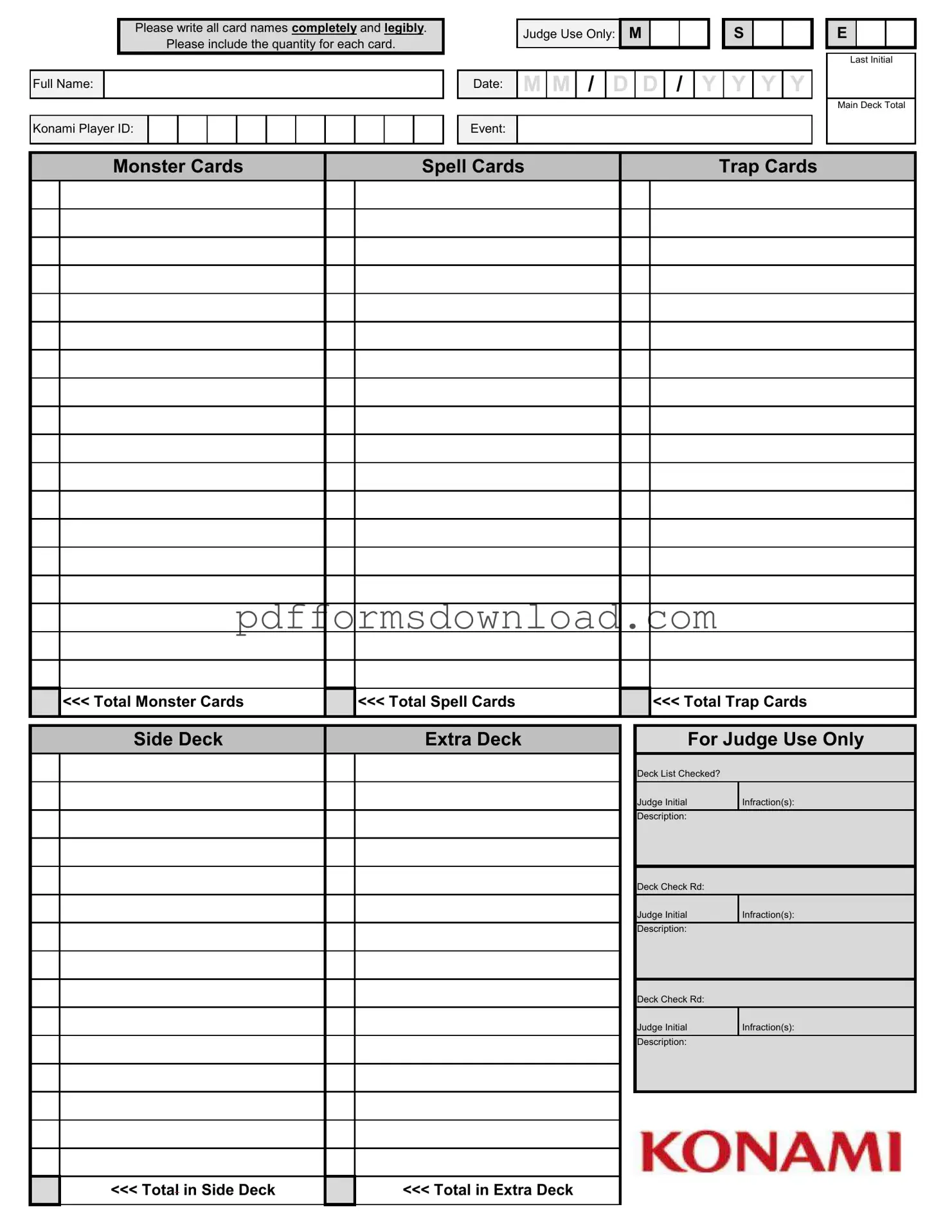What is the purpose of the Konami Decklist form?
The Konami Decklist form serves as a crucial tool for players participating in official tournaments. It allows players to document their deck composition accurately, ensuring compliance with tournament rules. By filling out this form, players help judges verify that their decks meet the required standards and that all cards are accounted for during gameplay.
How should I fill out the card names on the form?
When completing the form, it is essential to write all card names completely and legibly. This means using the full name of each card as it appears on official card lists. Clear handwriting helps prevent misunderstandings and ensures that judges can easily read and verify your deck.
What information do I need to provide on the form?
You'll need to include several key pieces of information. Start with your full name and your Konami Player ID. Additionally, the form requires the event date, your last initial, and a breakdown of your deck, including the total number of monster cards, spell cards, and trap cards. If you have a side deck or extra deck, you’ll also need to include those totals.
What happens if I make a mistake on the form?
If you realize you've made a mistake after submitting the form, it's important to notify a judge immediately. They can assist you in correcting the error before the tournament begins. Keeping your deck list accurate is vital, as discrepancies can lead to penalties during the event.
What is the significance of the 'Judge Use Only' section?
The 'Judge Use Only' section is reserved for tournament officials to note any infractions or observations during deck checks. This area allows judges to document any issues related to your deck list, ensuring that all players adhere to the rules and maintain a fair playing environment.
How do I calculate the totals for my deck?
To calculate the totals for your main deck, simply count the number of monster cards, spell cards, and trap cards you have included. Write these totals in the designated areas on the form. Be sure to double-check your counts to ensure accuracy before submitting your deck list.
What should I do if I have a side deck or extra deck?
If you have a side deck or extra deck, make sure to include the total number of cards in each section on the form. This information helps judges understand your complete deck strategy and ensures that you are following tournament guidelines. Remember, both the side deck and extra deck are important components of your overall deck strategy.
Why is it important to keep my deck list updated?
Keeping your deck list updated is vital for several reasons. First, it ensures that you are aware of the cards you are using, which can impact your strategy during the tournament. Second, an accurate deck list helps prevent any potential penalties for illegal cards or discrepancies. Regularly reviewing and updating your list can also enhance your overall gameplay experience.
